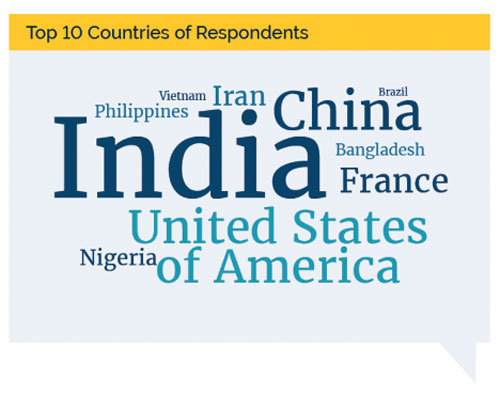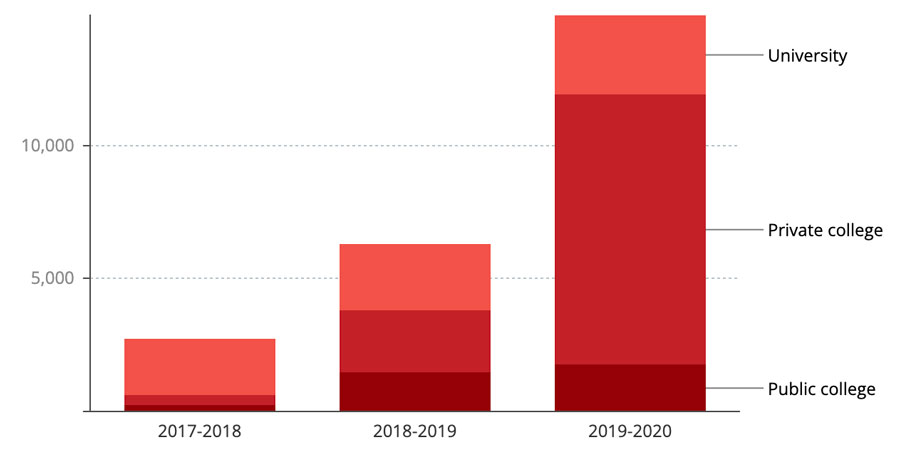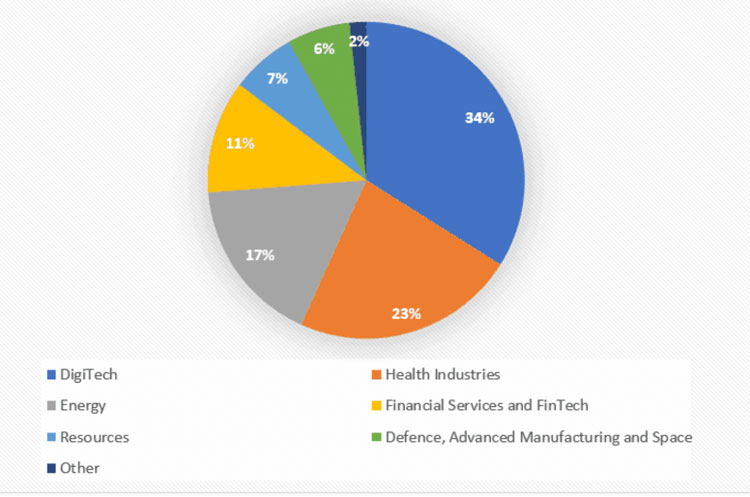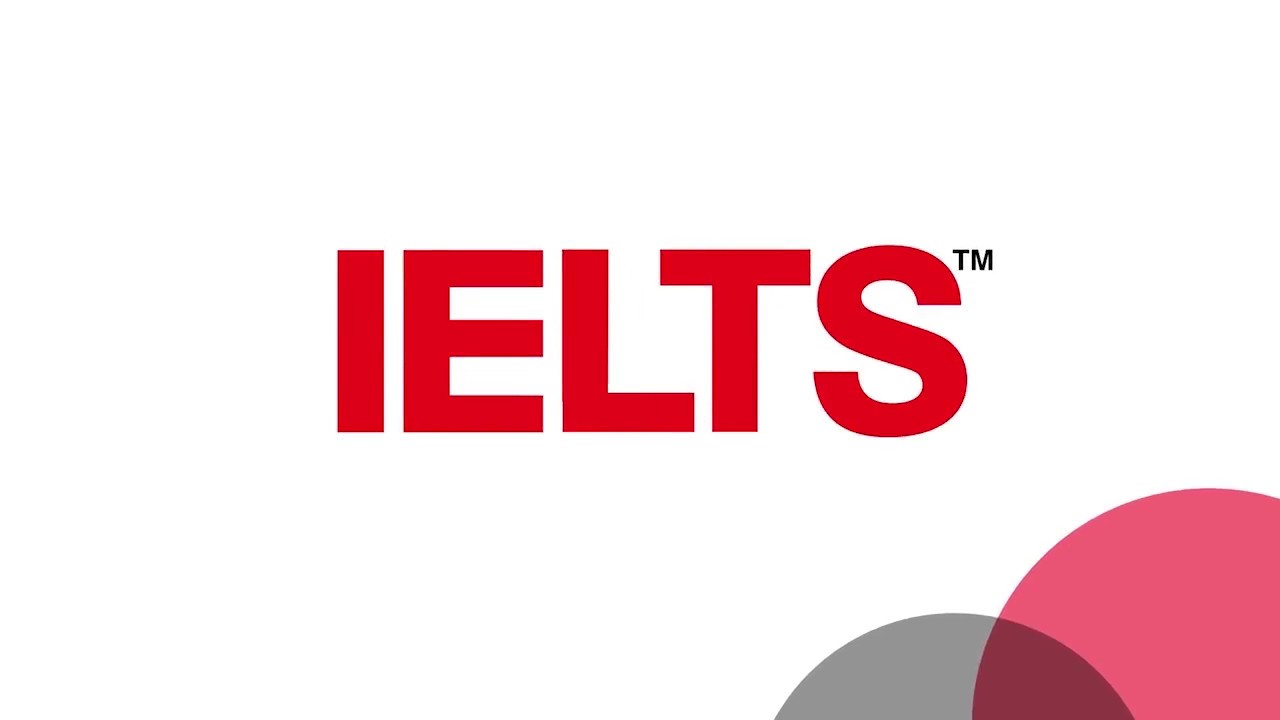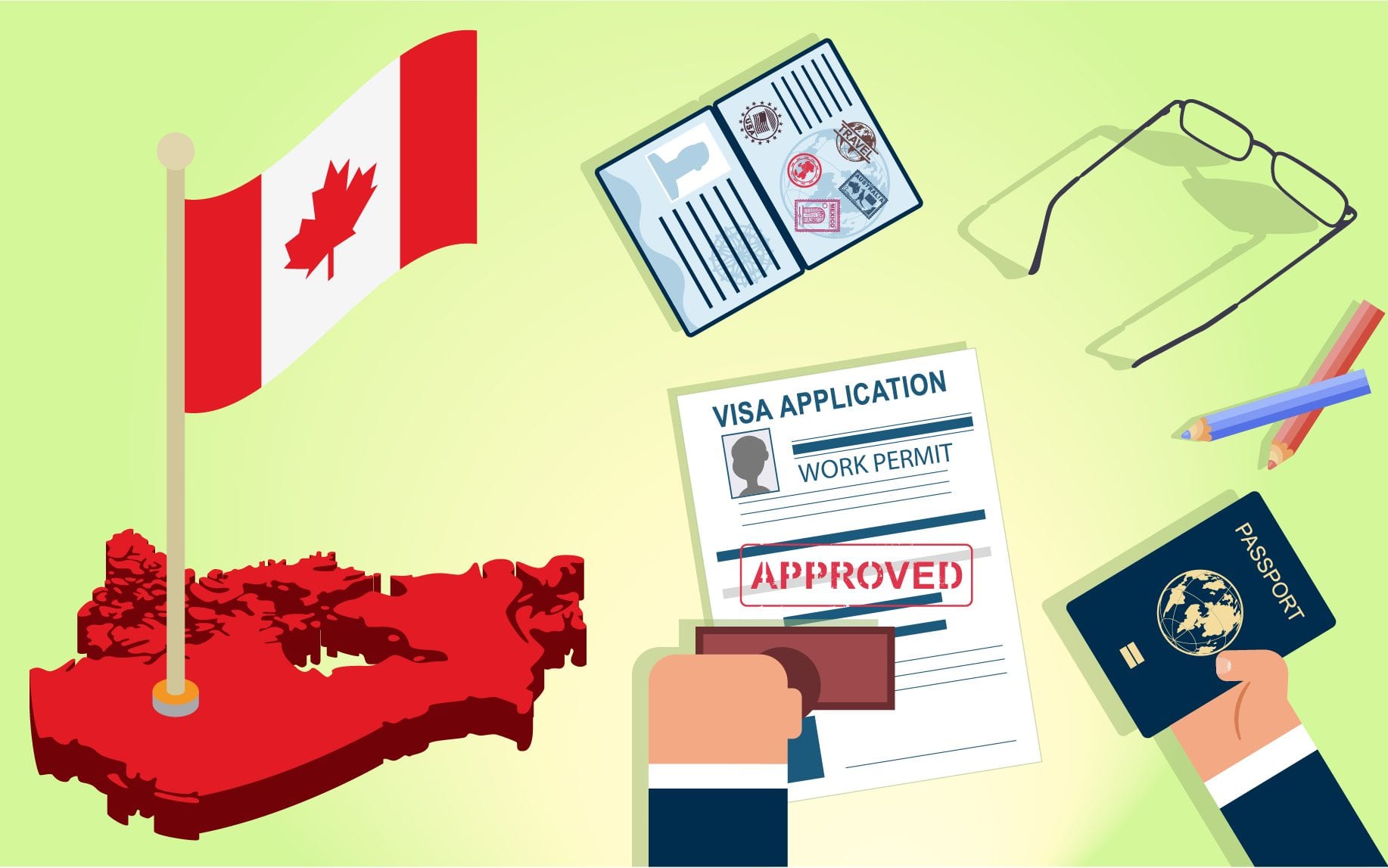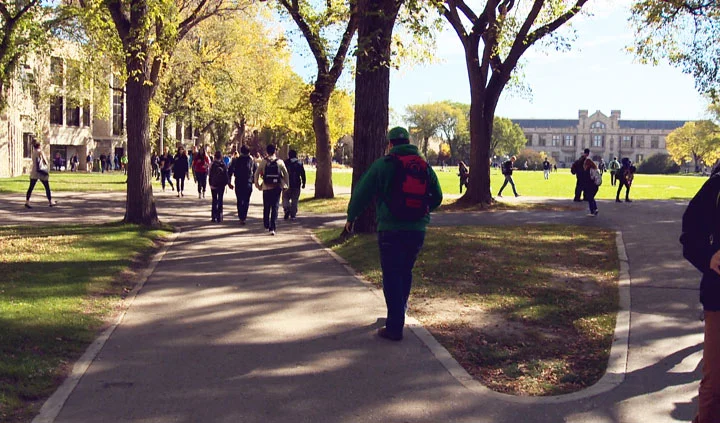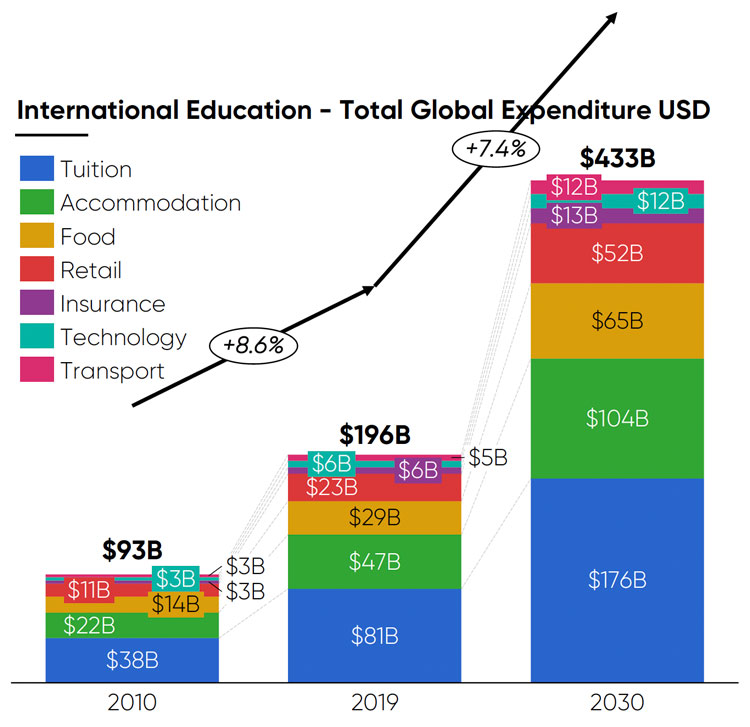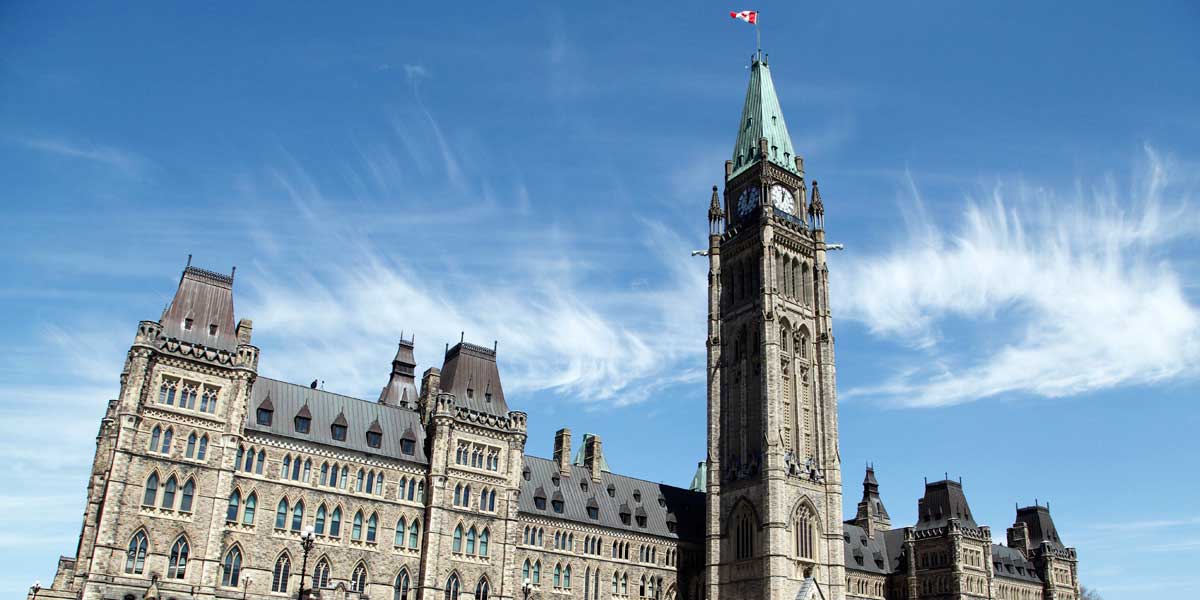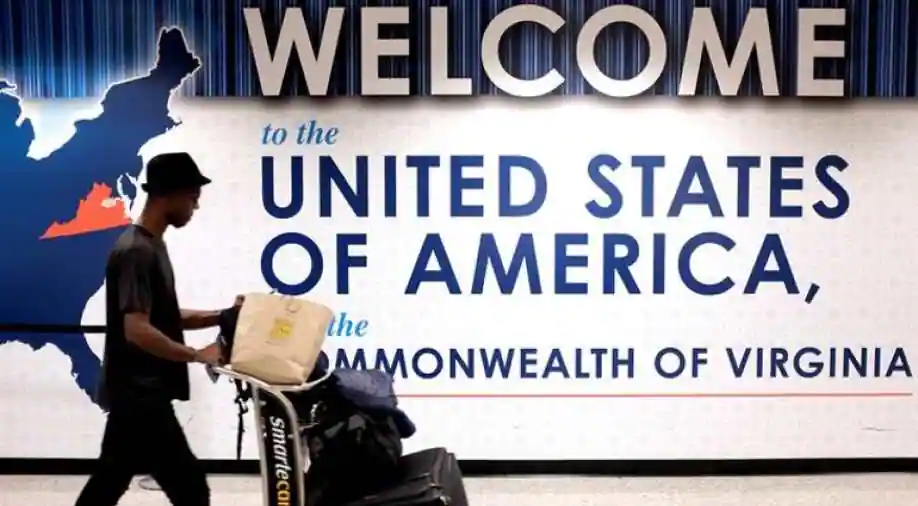Canada is expanding its immigration policy to admit a bigger number of new permanent residents, which means that international students studying in the country will have more options to stay after graduating from Canadian universities.
Overall, the Canadian government plans to welcome 431,645 permanent residents in 2022, 447,055 in 2023, and 451,000 in 2024, according to the Immigration Levels Plan 2022-2024. These are the highest immigration targets ever set for Canada. More than 405,000 people from all around the world arrived in Canada as permanent residents in 2021, the biggest number ever in a single year in Canadian history.
The expansion will be led by international student categories
Increased caps in the "Federal High Skilled" category, which accepts applications from international graduates of Canadian schools, will drive the expected increase. The number of places in this category will expand from 55,900 this year to 111,500 in 2024. The Federal Skilled Worker Program, the Federal Skilled Trades Program, and the Canadian Experience Class are all immigration streams that will contribute to the increase.
The new immigration targets are designed with two main priorities in mind: (1) to attract the most talented students and workers to join the Canadian labour market and (2) to help refugees (particularly from Afghanistan) to make a new, safer home in Canada. In a statement to CIC News, Immigration Minister Sean Fraser explained:
“This levels plan is a balance of needs for our country and our international obligations. It focuses on attracting skilled workers who will contribute to Canada’s economy and tackle the labour shortage, while recognising the importance of family reunification, and helping the world’s most vulnerable populations through refugee resettlement. Our focus remains on supporting our economic resurgence through increased retention of newcomers in regions with real economic, labour and demographic challenges. I’m proud of what Canada has achieved thus far, and I want wait to see how newcomers will continue to make Canada a top destination of choice.”
Immigration plan designed to help fill skills gaps
Immigration is fundamental to Canada’s economic growth. The Government of Canada notes,
“Immigration already accounts for almost 100% of labour force growth, and with 5 million Canadians set to retire by the end of this decade, the worker to retiree ratio will drop down to only 3:1. This is a clear sign that we have a strong economic need for increased immigration.”
The government announced a new immigration stream last year specifically focused on international students and workers with expertise in sectors where there are labour market skills gaps. In announcing the new Temporary to Permanent Residence Stream (TR2PR) stream, Minister of Immigration, Refugees and Citizenship Marco Mendicino said:
“The pandemic has shone a bright light on the incredible contributions of newcomers. These new policies will help those with a temporary status to plan their future in Canada, play a key role in our economic recovery and help us build back better. Our message to them is simple: your status may be temporary, but your contributions are lasting—and we want you to stay.”
More than half of new permanent residents will come from the main streams used by international students to become permanent residents of Canada.
At this time, Canadian immigration officials have eliminated some Express Entry spots to make place for the TR2PR stream — an important change for potential international students considering what to study in Canada, as the TR2PR stream is focused on specific sectors and occupations.
The Provincial Nominee Program, which allows provinces to invite international students to immigrate, will increase from 83,500 spots in 2022 to 93,000 spots in 2024.
A better, more streamlined immigration system
A slow and unpredictable processing system for immigrants has been the subject of frustration among applicants for Canadian residency for some time. As an article by Canadian immigration law firm Canadim notes,
“During the height of the COVID-19 pandemic, a majority of IRCC (Immigration, Refugees and Citizenship) staff were on leave. IRCC was also unable to finalise many permanent residence applications due to the travel restrictions in place. These effects of the pandemic resulted in a massive application backlog. As of October 2021, IRCC had a backlog of about 1.8 million applications.”
However, the firm also explains that,
“Despite the challenges posed by the pandemic, it also paved the way for a more efficient immigration system. In the last quarter, IRCC has admitted more newcomers per month than ever seen in Canadian history.”
The Government of Canada has invested CDN$85 million to clear application backlogs and to support a range of other improvements aimed at “creating the predictable processing times that our clients expect and deserve.” Through a suite of modernisation initiatives including online application systems and advanced data analytics, the government will “further increase processing capacity and plan to make 147,000 permanent residence final decisions in the first quarter of 2022 – doubling what was done in the same period last year.”
Canadian colleges to play a key role
Colleges and Institutes Canada (CICan) says that colleges are ideally poised to help international students to become important contributors to Canada’s economy:
“They serve as a one-stop shop for skilled newcomers looking to quickly integrate into the labour market and provide critical support, including language training, employment services, and connections to community employers. They also offer specialised academic upgrading programs to international and newcomer students, and a variety of reskilling and upskilling options tailored to their local employment market.”
CICan proposes two excellent ideas to further the likelihood that international students can quickly adjust to life in Canada and enter the labour market:
“First, we must develop a national employment pipeline for skilled newcomers with an emphasis on a national workplace-focused language training programme. This needs to include work-integrated learning opportunities and wraparound support services that prepare new arrivals for life in Canada and facilitate rapid and meaningful labour market integration, while accounting for their wellbeing and mental health.
We should also encourage the development of employer-recognised national microcredentials that focus on in-demand skills. With microcredentials gaining momentum at colleges and institutes across Canada, we have an opportunity to develop flexible programmes adapted to the needs of newcomers.”
New overseas students are pouring in
Through August 2021, the IRCC recorded more than 730,000 additional student permit applications, a 27% increase over the same period in 2019. The increase in application volume for 2021 mirrors recent enrolling trends. Indian students accounted for over 22% of all applications so far in 2021, with other significant pre-pandemic growth markets, such as Bangladesh, Colombia, Iran, Nigeria, the Philippines, and Vietnam, also showing increased vigor.
Source: ICEF













